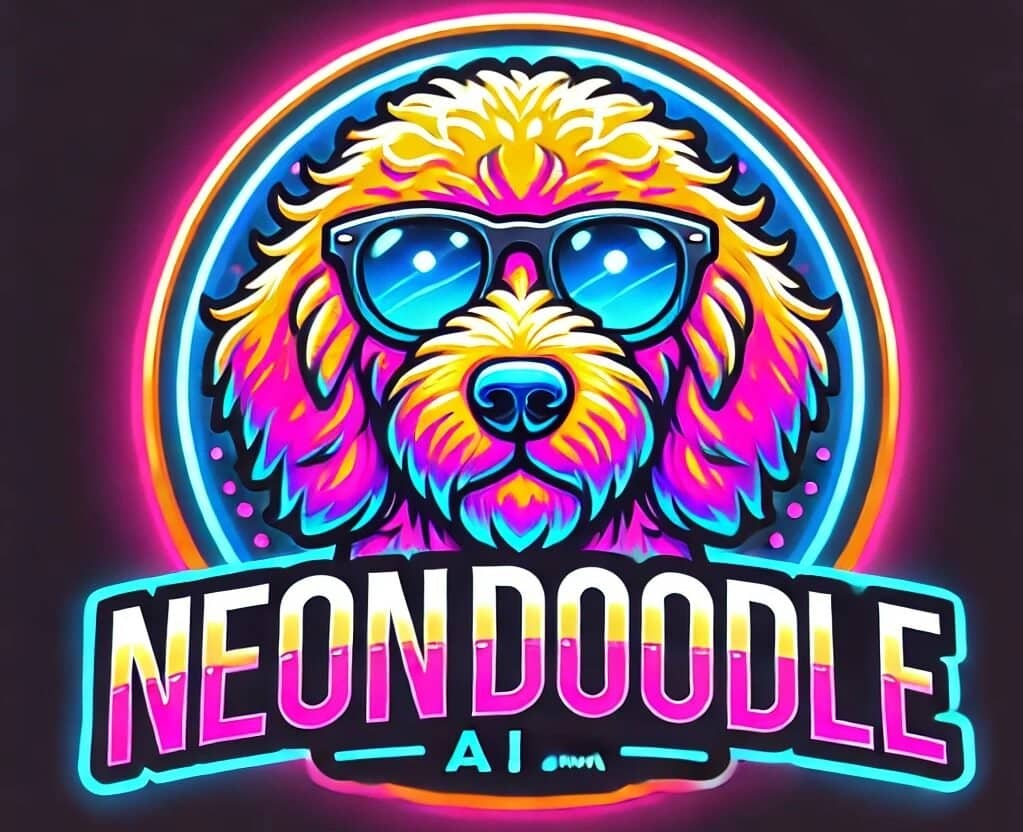In an era where technology touches every aspect of our lives, artificial intelligence has found its way into the world of pet care, creating unprecedented opportunities for better health monitoring, enhanced companionship, and improved quality of life for our animal companions. This comprehensive look at AI pet technology examines the cutting-edge innovations transforming how we interact with, care for, and understand our pets.
Smart Companions: The Rise of AI Pet Robots
The evolution of robotic pet companions has accelerated dramatically in recent years, with 2024-2025 seeing the emergence of increasingly sophisticated AI-powered pet bots that offer companionship, entertainment, and even emotional support.
Emo, described as “an AI desktop pet” with “his own personality and feelings,” represents the new generation of digital companions. Using two highly advanced deep neural network CPUs and more than 10 sensors, Emo can recognize faces, respond to voice commands, and express emotions through its interactive display face. As one reviewer noted, “Emo may not change your life, but he will always bring you a little joy and fun.” Source
Similarly, Luna exemplifies the advanced capabilities of modern pet robots. She responds to both vocal commands and gestures, exhibits playful behaviors, and can even be trained to perform new tricks through a simple drag-and-drop programming interface based on Google Blockly. Luna’s creator explains, “She’s friendly, super cute, and super playful—everything you can ask for in a best friend or better yet, a new family member.” Source
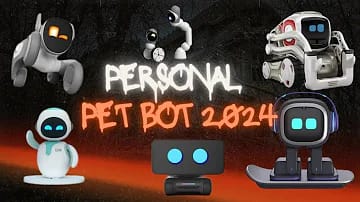
Other notable entries in the AI pet companion space include:
- Kiki: An evolving robot companion that develops a unique personality based on interactions, capable of recognizing emotions and responding appropriately.
- Clickbot: A modular robot system with over 10,000 possible configurations, combining play with STEM learning opportunities.
- Jibo: The “world’s first family robot” that functions as a cameraman, hands-free helper, and entertainment system.
AI-Powered Health Monitoring: Preventive Care Revolution
Perhaps the most significant impact of AI on pet care comes in the form of health monitoring and diagnostic technologies. As veterinary medicine embraces artificial intelligence, pet owners gain unprecedented insights into their companions’ health status.
Early Disease Detection
AI-powered diagnostic tools can now analyze medical imaging like ultrasounds, CT scans, and X-rays with remarkable accuracy, identifying potential health issues before they become serious. “AI can detect health issues like inflammation or even lymphoma in cats far earlier than traditional methods,” explains one veterinary technology expert. “It’s like giving veterinarians an extra set of eyes that can pick up the smallest signs of illness.” Source
The TTcare app, developed by AI FOR PET, exemplifies this technology. Registered as a “medical image diagnosis assistance software,” TTcare uses a smartphone camera to examine pets’ eyes or skin for disease symptoms. The AI behind TTcare has learned from more than 500,000 pieces of data, enabling it to detect eye and skin diseases with remarkable accuracy—up to 99% for certain conditions. Source
Predictive Health Analytics
Beyond detecting existing conditions, AI systems can predict potential health issues years in advance. “By analyzing a cat’s blood and urine samples, AI can predict the development of chronic kidney disease years in advance, allowing for early interventions that keep your pet healthier longer,” notes a specialist in the field. This predictive capability extends to population health, helping veterinarians track and control infectious diseases across communities. Source
Personalized Treatment Plans
AI’s impact extends to treatment planning as well. Machine learning algorithms can analyze a pet’s health data, genetic profile, and response to previous treatments to create truly personalized care plans. For example, tools like “imprimed” can predict how a dog with lymphoma will respond to specific drugs, allowing veterinarians to choose the most effective treatments without trial and error. Source
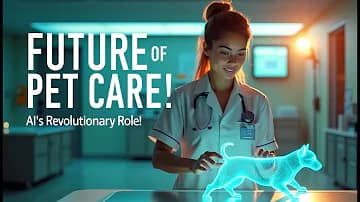
Decoding Animal Emotions: The Language of Pets
One of the most fascinating developments in AI pet technology is the ability to interpret and translate animal emotions and communications. Understanding what our pets are feeling has always been challenging, but AI is making significant strides in bridging this communication gap.
Facial Expression Analysis
AI systems can now analyze animal facial expressions with remarkable accuracy, identifying emotions through subtle changes in muscle movements. “AI can achieve up to 97% accuracy in identifying individual pigs and 82% in detecting pain in sheep,” reports a recent study. These systems recognize patterns like a “widened muzzle in cats indicating pain,” providing insights that might escape even experienced pet owners. Source
Vocalization Interpretation
Beyond facial expressions, AI is making progress in interpreting animal vocalizations. Stanford’s AnimalNet has achieved 87% accuracy in categorizing dolphin vocalizations, while other research teams are developing tools to interpret dog barks, cat meows, and even pig grunts. These advancements could revolutionize how we understand and respond to our pets’ needs. Source
“The blackbox nature of AI raises concerns about transparency in decision-making,” cautions Dr. Sarah Thompson, a veterinary AI researcher. “While AI achieves 82% accuracy in detecting sheep pain, surpassing human capabilities, we must be cautious about overreliance on AI due to its opaque decision-making processes.” The consensus among experts is that a hybrid approach, combining AI analysis with human observation, provides the most comprehensive understanding of animal emotions. Source
Smart Home Integration: The Connected Pet Environment
The modern pet experience is increasingly integrated with smart home technology, creating environments that adapt to both pet and owner needs.
AI Pet Cameras
Advanced monitoring systems go far beyond simple webcams, using AI to recognize pets, differentiate between normal and concerning behaviors, and alert owners to potential problems. “AI powered pet cameras offer a whole new level of interaction and monitoring,” explains a tech specialist. “These cameras can recognize your pet, allowing you to check in on them anytime, anywhere.” Source
Many cameras include two-way audio for remote interaction and built-in treat dispensers that allow owners to reward good behavior from anywhere. Some systems can even analyze pet behavior patterns, identifying signs of separation anxiety or boredom that might otherwise go unnoticed.
Automated Feeding and Hydration
Smart feeders and water dispensers ensure pets receive proper nutrition and hydration on schedule, even when owners are away. These devices can be programmed to dispense specific portions at predetermined times, helping maintain healthy weight and prevent obesity-related health problems.
“Automated feeders allow you to portion control your pet’s meals based on their breed, weight, and activity level,” notes a pet technology expert. Some advanced models include cameras to monitor eating habits, which can help detect potential health issues or appetite changes. Most connect to smartphone apps, allowing owners to adjust feeding schedules remotely and receive alerts about food or water levels. Source
Interactive Smart Toys
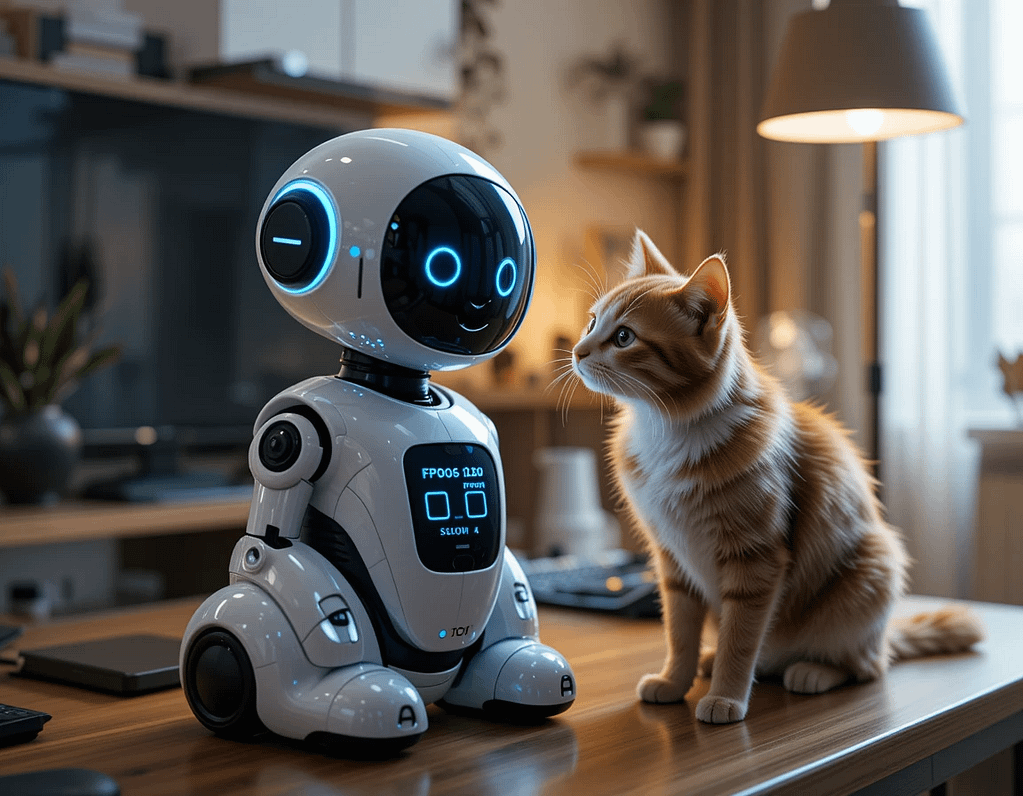
AI-powered toys keep pets mentally and physically stimulated when owners are busy or away. These range from self-propelling balls and autonomous laser pointers to complex interactive games that dispense treats as rewards.
“Smart toys aren’t just for fun and games,” explains a pet product designer. “Some are designed to provide companionship and alleviate boredom or separation anxiety.” Many connect to apps that track activity levels, helping owners ensure their pets get sufficient exercise for their age and breed. Source
Wearable Pet Technology: Health on the Go
Wearable devices for pets have evolved beyond simple GPS trackers to become comprehensive health monitoring systems.
Advanced Tracking and Monitoring
Modern pet wearables combine location tracking with health monitoring sensors that measure vital signs like heart rate, temperature, and respiratory rate. “This information can be crucial in detecting potential health problems early on, allowing you to seek veterinary care promptly,” says a veterinary technologist. Source
These devices are particularly valuable for senior pets or those with existing health conditions, as they enable continuous monitoring and early intervention when problems arise. Most connect to smartphone apps that analyze trends and alert owners to concerning changes.
The Future of AI Pet Technology
The horizon for AI pet technology continues to expand, with several exciting developments on the near horizon:
AI-Powered Pet Translators
The future may soon bring devices that can translate pet vocalizations and body language into human-understandable communication. “Imagine a world where you can finally understand what your pet is thinking,” enthuses one technology forecaster. “AI-powered translators are being developed to analyze your pet’s vocalizations and body language, translating their emotions and needs into human language.” Source
Self-Cleaning Pet Systems
Automatic waste management systems will continue to evolve, with self-cleaning litter boxes and yard maintenance solutions that require minimal human intervention. These technologies promise to eliminate some of the less pleasant aspects of pet ownership while maintaining high standards of hygiene.
Veterinary Telemedicine
The integration of AI with remote veterinary services will expand access to expert care. “Imagine having a virtual consultation with a veterinarian through a video call, eliminating the stress of traveling to the vet’s office for your pet,” suggests a veterinary technology specialist. AI-assisted diagnosis could help veterinarians make more accurate assessments during remote consultations, improving outcomes while reducing stress for pets. Source
Ethical Considerations and Challenges
As with any technological revolution, the rise of AI pet technology brings important ethical questions and challenges that must be addressed:
Data Privacy and Security
The collection of pet health and behavior data raises privacy concerns that must be carefully managed. Manufacturers need to implement robust security measures to protect this information and be transparent about how it’s used.
The Human Element
Technology experts and veterinarians alike emphasize that while AI pet technology offers tremendous benefits, it cannot replace the human-animal bond. “No matter how advanced pet tech becomes, the human touch remains irreplaceable,” reminds a pet behavior specialist. “Spending quality time with your pet—playing with them, cuddling them, and showing them affection—are essential for their emotional well-being.” Source
Accessibility and Equity
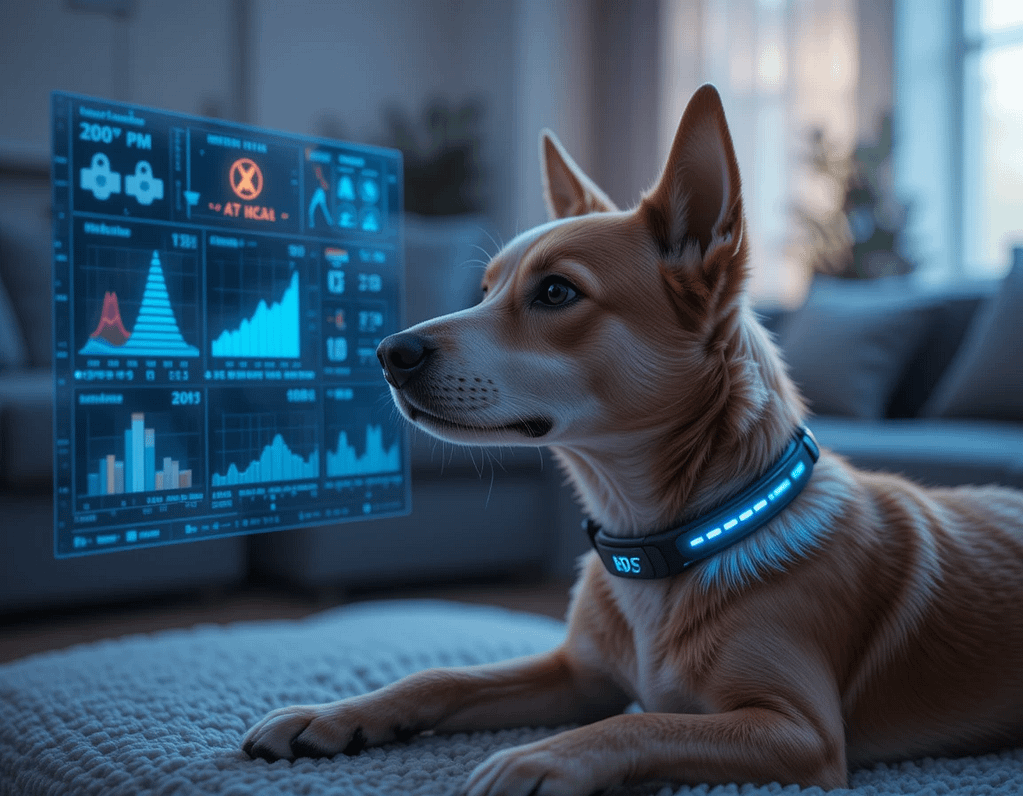
As with many technological innovations, there’s a risk that advanced AI pet technology will primarily benefit those who can afford it. Industry leaders are encouraged to work toward solutions that are affordable and accessible to a wide range of pet owners, ensuring that all animals can benefit from these advances.
Conclusion: A New Era of Pet Care
The integration of artificial intelligence into pet care represents nothing less than a revolution in how we understand, monitor, and enhance the lives of our animal companions. From robotic friends that provide companionship to sophisticated health monitoring systems that detect illness before symptoms appear, AI is transforming every aspect of the human-animal relationship.
As we look to the future, the most successful applications of AI pet technology will likely be those that enhance rather than replace the bond between pets and their humans. By automating routine tasks, providing insights that would otherwise remain hidden, and enabling new forms of communication and understanding, AI has the potential to deepen the connections we share with our pets while helping them live longer, healthier, and happier lives.
In the words of one industry expert: “The world of pet tech is rapidly evolving, offering exciting possibilities for the future of pet care. AI, machine learning, and other advancements are revolutionizing the way we understand and care for our furry, feathery, or scaly friends… The most important thing is to shower your pet with love and attention. Pet tech can be a valuable tool, but it can’t replace the irreplaceable bond you share with your furry companion.” Source
As we embrace this technological revolution in pet care, the future looks bright indeed for our beloved animal companions.
